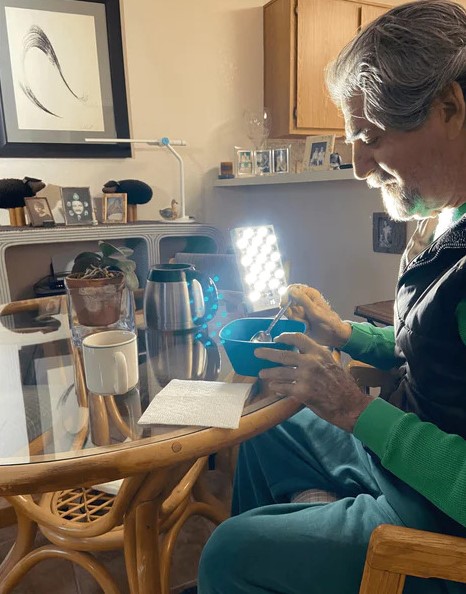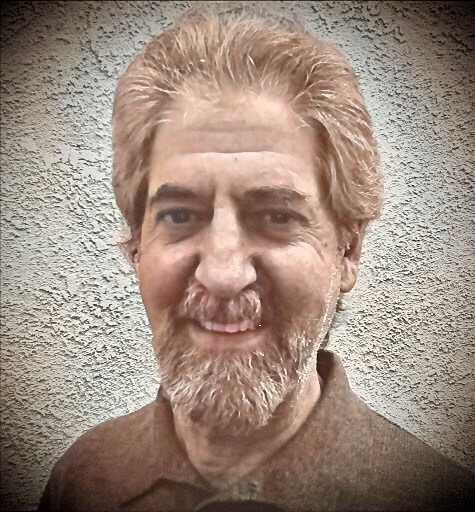Mal-illumination may sound like a strange word; however, millions suffer from this serious health risk— most, unwittingly! The term was coined about 50 years ago by photobiology pioneer, Dr. John Ott, to describe an environmental lighting condition that’s akin to malnutrition.
Guest article by Ken Ceder
“Mal-illumination is to Light as Malnutrition is to Food” —Dr. John Ott
We now spend most of our time indoors—caregivers and care recipients included. Unaware, we are starving for the essential natural light our genes are programmed to respond to. Being stuck in “biological darkness” profoundly affects every body system including cognition. Most people today do not spend enough time in “full-spectrum” sunlight that augments immunity. We spend too much time indoors under unhealthy “limited spectrum” light that adversely impacts immunity.
Don’t be SAD
As the days grow shorter and caregivers enter the holiday season, be aware that the reduced daylight can contribute to a form of depression known as seasonal affective disorder. SAD affects people who are sensitive to less sunlight. About 3% of the population or 10 million people in the USA suffer from this condition.
A big misconception about SAD is that it’s just something in your head, however it’s a diagnosable subset of major depression.
In most cases, SAD symptoms appear during late fall or early winter and go away during the sunnier days of spring and summer. Less common is an opposite pattern where symptoms begin in spring or summer. Either way, symptoms may start out mild and become more severe as the season progresses.
SAD Symptoms May Include
- Feeling listless, sad, or down
- Loss of interest in previously enjoyable activities
- Low energy and sluggish feelings
- Sleeping problems
- Carbohydrate cravings, weight gain
- Difficulty concentrating
- Hopeless. worthless, or guilt feelings
For centuries, scientists and observers of human nature have noted that winter’s shorter days and longer nights have a psychological effect on people, particularly those living in northern climates. But this phenomenon wasn’t officially acknowledged until the 1980s, when psychiatrist Dr. Norman Rosenthal fully described SAD and pioneered the use of light in its treatment.
SAD and Melatonin
In recent years, scientists have linked SAD to melatonin—a hormone produced by the tiny pineal gland at the base of the brain. The amount of melatonin released into our bloodstream is regulated by the amount of light that passes through our eyes—less light, more melatonin.
When darkness falls, melatonin lowers our body temperature and makes us start to feel sleepy. Similarly, when the days shorten in winter, melatonin is released into the system for longer stretches of time due to less light.
Light Therapy
People experiencing milder “winter blues” can often chase away their symptoms by taking in more natural light. However, more severe cases of SAD often require daily phototherapy. Most studies have shown that about 87% of individuals experiencing SAD show improvement when using light therapy.
The correct type of light at the correct time of day is essential to relieving SAD. The preferred light spectrum (color wavelengths) of choice is called “full-spectrum” light. It’s important to compare specifications because spectrum matters for effectiveness and especially vision safety. For most people early morning light therapy works best.
Light therapy is often referred to as “bright light therapy.” Light devices for SAD are recommended to emit 10,000 lux of light. Lux is a measurement of light on a surface that is basically equal to one lumen per square meter. For comparison, office lighting averages 300-500 lux, an overcast day is approximately 1,000 lux, full daylight is about 10,000 lux and a bright summer day reaches 100,000 lux.

Reducing Caregiver Burnout
Of special interest to caregivers and care recipients: Almost every caregiver experiences burnout, having grown overwhelmed and physically, emotionally, and mentally exhausted from stressful moments caring for a loved one. If caregiver stress and burnout are not addressed, the caregiver is unable to provide quality care. This can be harmful to the person receiving care as well as to the caregiver. Light therapy has proven to be quite effective in reducing stress and caregiver burnout.
For more information, see our animated 3-minute video: The Most Overlooked Wellness Essential…
Ken Ceder is the executive director of Science of Light (SOL). SOL is a 501(c)(3) non-profit dedicated to the memory of pioneering photobiologist, Dr. John Ott—the father of full-spectrum light technology. SOL is focused on raising awareness of mal-illumination— the silent epidemic.








